CATALYST
DENVER MUSEUM OF NATURE & SCIENCE ONLINE MAGAZINE
Radiant Science! The Museum's Fluorescent Rocks
How the Museum is Assembling a Glow-in-the-Dark Mineral Display
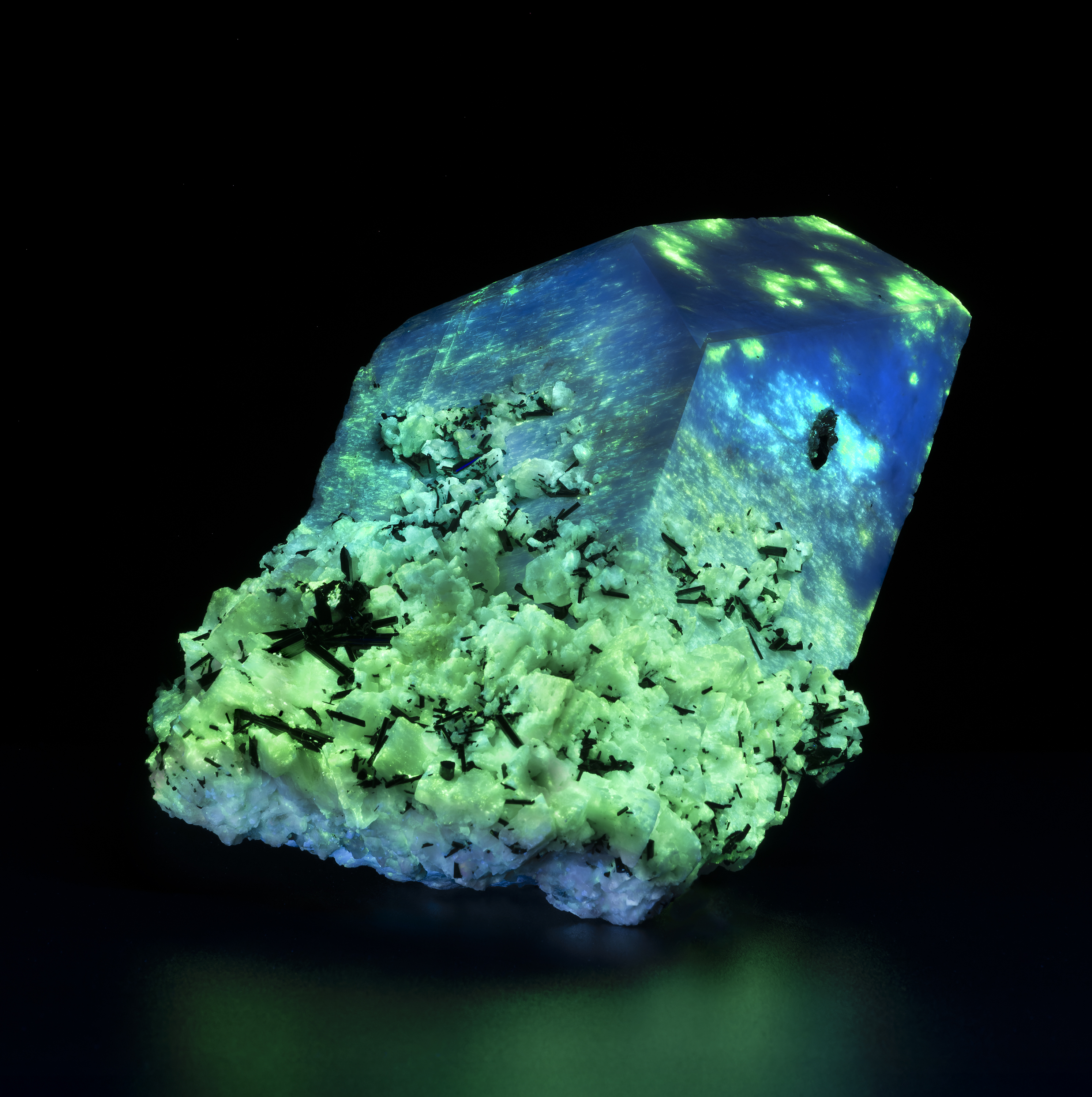
A large white fluorescent microcline crystal, fluorescing blue and green, with small black schorl crystals, collected in Afghanistan and donated in 2025. Catalogue number: EGM.19548 (Photo/ Rick Wicker)
Rocks and minerals come in a stunning array of colors — from vibrant purple fluorites to sparkling white marble. But that’s not all — many minerals have secret colors that can only be seen in the dark. That’s right: rocks can glow in the dark!
This spectacle occurs because some rocks contain minerals that emit a colored light when exposed to ultraviolet (UV) or “black” light. This phenomenon is called fluorescence. Some minerals like pyrite are never fluorescent, while others like autunite are always fluorescent. Most minerals fall somewhere in between and may fluoresce depending on where they formed and what compositional impurities they have. Many of these fascinating fluorescent minerals will be displayed in a special case in the upcoming renovation of the Museum’s classic Gems and Minerals Hall.
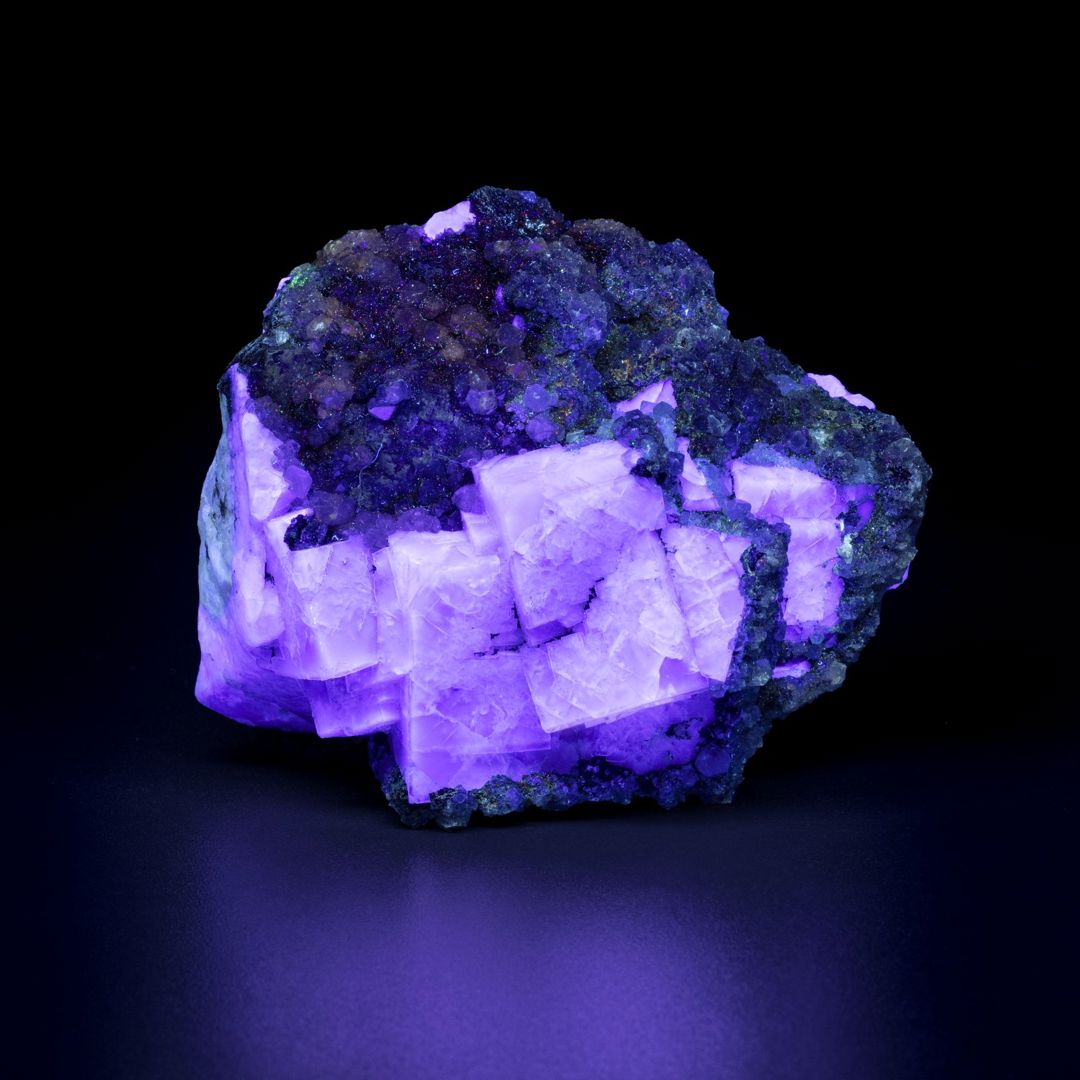
This specimen of fluorite from Weardale, England appears a pale reddish purple in daylight but under UV light it fluoresces a bright purple blue. The specimen was donated in 1972. Catalogue number: EGM.9887. (Photo/ Rick Wicker)
The science behind these fluorescent colors is almost as dazzling as the rocks themselves. Fluorescent minerals can emit green, yellow, blue, red and many other colors of light when exposed to UV light. Just like visible light, ultraviolet light has energy. In fact, it’s this energy that burns our skin when we stay in the sun too long. When high-energy UV light hits a mineral, it energizes electrons within its atoms, causing the electrons to jump to a higher energy state. When the electrons fall back to their original position, the energy is released as visible light. That light meets our eyes, and we see it as a color. The specific color depends on the wavelength of the energy released.
For the new mineral hall, the Museum plans to create a large display of rocks and minerals that shows a full “fluorescent rainbow” of color. This fluorescent mineral case is just one of over 60 new cases planned and will be one of the largest in the new exhibition. It will showcase hundreds of specimens from around the world, including over 75 mineral species and even a few glow-in-the-dark fossils!
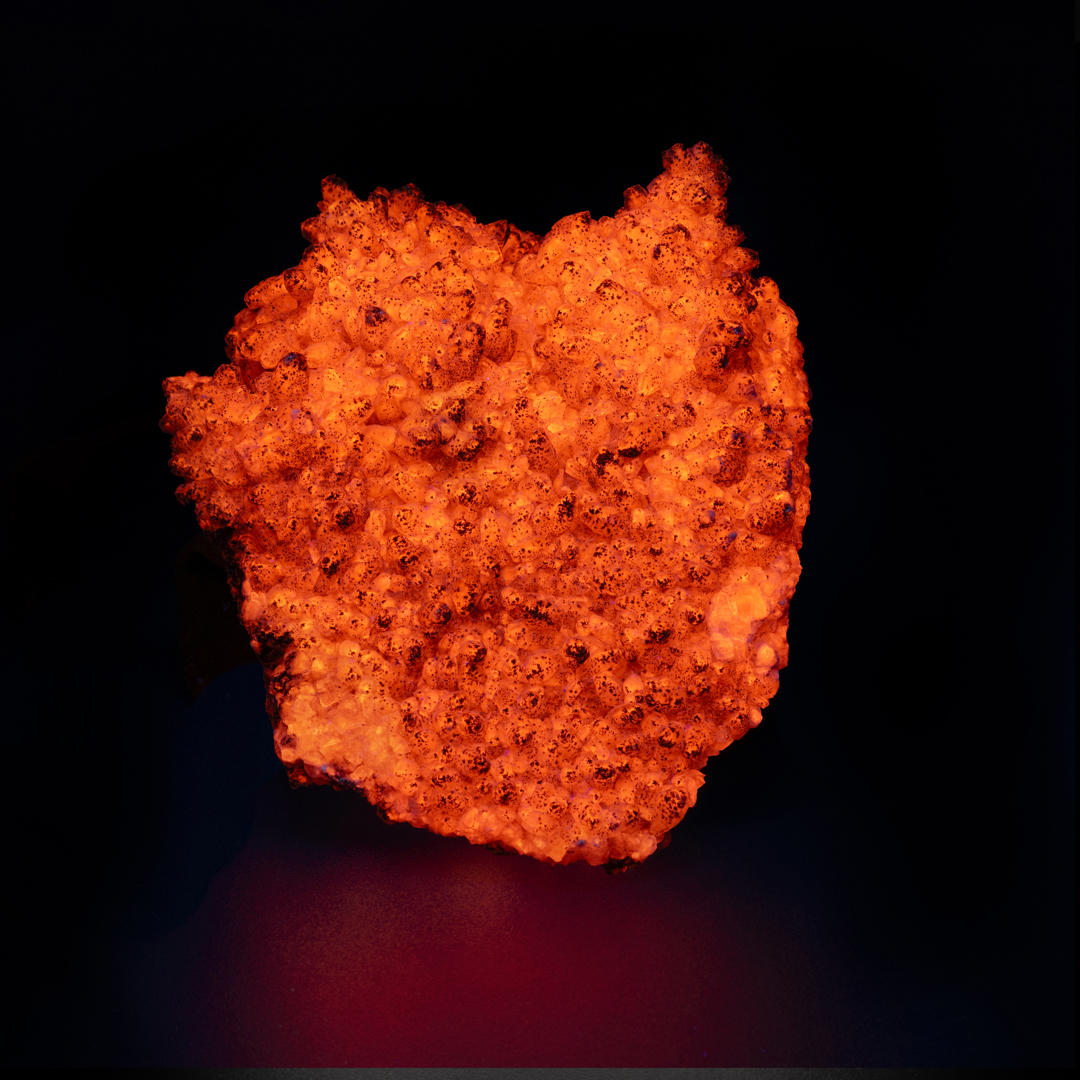
This manganocalcite from Buffalo, Iowa is clear with small black marcasite inclusions but glows bright orange under UV. This specimen was donated in 2025. Catalogue number: EGM.20412.
Assembling the specimens for this case was nothing short of an adventure. We knew we had at least a small number of fluorescent minerals in our collections, but because most specimens were collected for other reasons, we had no idea how many fluorescent minerals there actually were. To search for these hidden treasures, we surveyed the entire geology collection, as well as the current Gems and Minerals Hall with UV flashlights. No small task!
With help from a bevy of volunteers and fluorescent mineral experts from our regional mineral community, we gathered in the dark after hours to examine every single rock and mineral in the Museum’s collections — over 20,000 specimens. Over the course of several months, we assessed the brightness, color and UV sensitivity of thousands of fluorescing specimens. Among them, we identified a few stunning “glowers” that we plan to display in the new mineral hall. One of our biggest surprises? Many of these fluorescent treasures are hidden in plain sight — already on display in Coors Hall of Gems and Minerals.
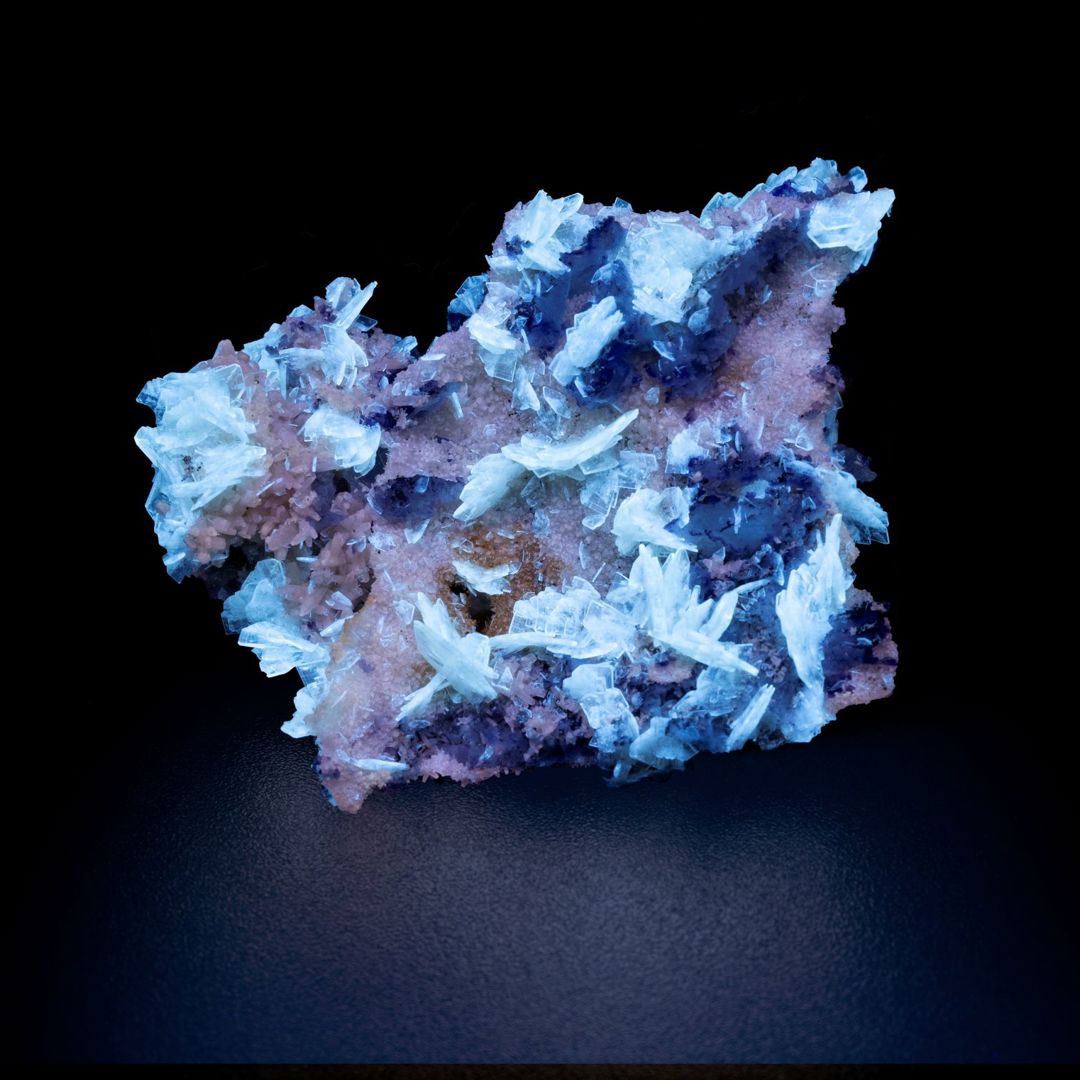
The white blades of baryte on this specimen from Cave-in-Rock, Ill., fluoresce a bright blueish white under UV light. The specimen was donated in 1986. Catalogue number: EGM.16216. (Photo/ Rick Wicker)
Another surprise was discovering that our collection lacked fluorescent minerals from certain parts of the color spectrum, and from several iconic fluorescent mineral sites. Luckily, the local fluorescent mineral community was more than happy to help, donating specimens to fill the gaps. Former Fluorescent Mineral Society President Conrad North offered nearly a hundred specimens from his own collection, representing a smorgasbord of groovy glow-in-the-dark geology. With such generous donations of specimens, time and expertise, we’ve nearly acquired all the specimens for this new fluorescent mineral display.
Soon, you too will be able to experience the full spectrum of fluorescent minerals — alongside many other geologic wonders — in the forthcoming Dea Family Gems and Minerals Hall.
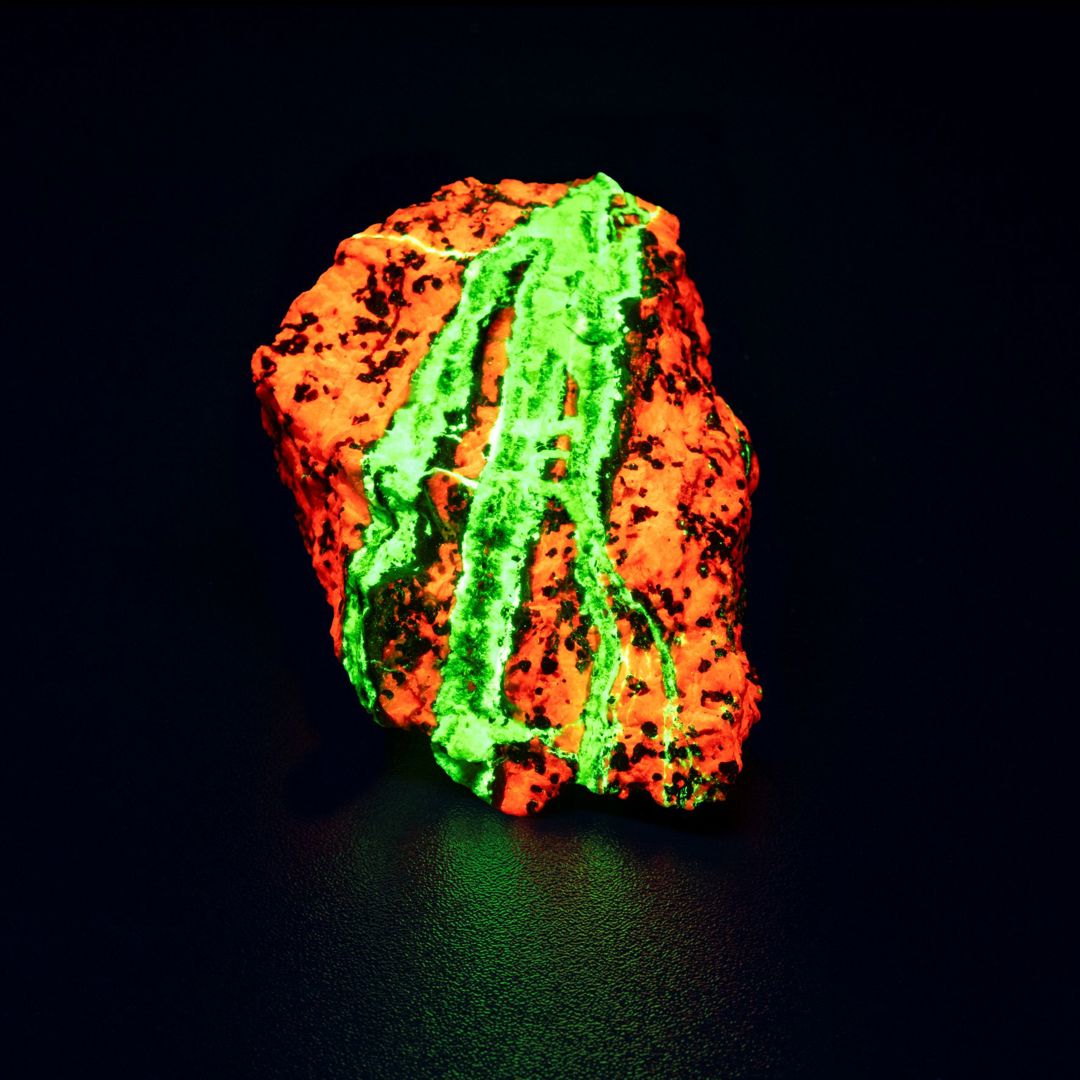
Many specimens like this one from Sterling Hill, New Jersey are famous for their fluorescence. This piece has large veins of willemite — fluorescing green — cutting through calcite — fluorescing orange. The specimen was donated in 1984. Catalogue number: EGM.18263. (Photo/ Rick Wicker)
From the ancient past to the present day, from land to sea to sky, the Denver Museum of Nature & Science offers an unparalleled opportunity to discover and explore the wonders of the natural world that surrounds us. Come visit us at the Museum!
Ready to explore more?
Plan your visit and see the wonders of nature and science up close. Get your tickets today, or become a member for unlimited admission, exclusive events and a full year of discovery!
Eva Jorn and Nicole Neu-Yagle are Assistant Collections Managers at the Denver Museum of Nature & Science.
James Hagadorn is the Tim and Kathryn Ryan Curator of Geology at the Denver Museum of Nature & Science.
Summer 2025
In This Edition
-
Hunting for the Last Cretaceous Ecosystems of Peru
Museum Paleontologists Climb the Andes to Crack the Fossil Code
-
The Story Behind Nature Play’s Public Art Installations
Meet the Artists Helping to Shape a Unique Creative Play Experience in City Park
-
Museum Launches a New Way to Discover our Digital Collections
You Can Now Download Material Directly from Science Collections!
-
What DNA Can Tell Us About Our World
A Behind the Science Conversation with the Scientists in our Genomics Lab
-
Radiant Science! The Museum's Fluorescent Rocks
How the Museum is Assembling a Glow-in-the-Dark Mineral Display
-
Finding Direction in Our Current State of Affairs
The Institute of Science & Policy Provides Tools, Resources for Critical Thinking
-
The Museum Beadwork Collection Travels to Oklahoma
Building a New Model of Collaboration Between Tribal Governments and Cultural Institutions
Share this:



